Using swing and awt i've created a grid. The user can click over any empty cell of the grid, marking it as a red cell. The grid is composed by 20 x 20 cells, 32 pixels each.
When the user clicks over a cell, i get the x and y coordinates of the mouse click and i perform the following calculation to find out which is the selected cell:
int mouseX = e.getX();
int mouseY = e.getY();
int row = mouseY / Model.NODE_SIZE;
int col = mouseX / Model.NODE_SIZE;
The problem is that row and col get inaccurate (wrong) when i click near the edges of a cell (right border or bottom border), resulting in the marking of the next cell (cell to the right or cell to the bottom) and not in the marking of the correct one that i'm clicking over.
The more i get closest to the right/bottom borders of the grid, the more the accuracy is bad.
This is how i draw the grid:
public class MainPanel extends JPanel {
// reference to the model
private Model model;
public MainPanel() {
setPreferredSize(new Dimension(660, 660));
// retrieve the model
model = Controller.getController().getModel();
// draw
repaint();
// listen to mouse clicks
addMouseListener(new MouseAdapter() {
@Override
public void mouseClicked(MouseEvent e) {
int mouseX = e.getX();
int mouseY = e.getY();
System.out.println("mouseX: " + mouseX + " mouseY: " + mouseY);
// get the row and column clicked
int row = mouseY / Model.NODE_SIZE;
int col = mouseX / Model.NODE_SIZE;
if(row > Model.BOARD_SIZE - 1 || col > Model.BOARD_SIZE - 1) { // avoid out of bounds
return;
}
System.out.println("row: " + row + " col: " + col);
Controller.getController().getModel().setTarget(col, row);
repaint();
}
});
}
/**
* Custom painting codes on this JPanel
* Called by repaint()
*/
@Override
public void paintComponent(Graphics g) {
super.paintComponent(g); // fills background
setBackground(Color.WHITE); // sets background color
// draw the tiles
Node[][] nodes = model.getBoard();
for(int i = 0; i < Model.BOARD_SIZE; i++) {
for(int j = 0; j < Model.BOARD_SIZE; j++) {
if(nodes[i][j].getNodeType() == NodeType.OBSTACLE) {
g.setColor(Color.BLACK);
g.fillRect(i + Model.NODE_SIZE * i, j + Model.NODE_SIZE * j, Model.NODE_SIZE, Model.NODE_SIZE);
}
else if(nodes[i][j].getNodeType() == NodeType.SOURCE) {
g.setColor(Color.GREEN);
g.fillRect(i + Model.NODE_SIZE * i, j + Model.NODE_SIZE * j, Model.NODE_SIZE, Model.NODE_SIZE);
}
else if(nodes[i][j].getNodeType() == NodeType.TARGET) {
g.setColor(Color.RED);
g.fillRect(i + Model.NODE_SIZE * i, j + Model.NODE_SIZE * j, Model.NODE_SIZE, Model.NODE_SIZE);
}
else {
g.setColor(Color.BLACK);
g.drawRect(i + Model.NODE_SIZE * i, j + Model.NODE_SIZE * j, Model.NODE_SIZE, Model.NODE_SIZE);
}
}
}
}
}
Link to the runnable:
https://www.dropbox.com/s/bqoimipp7i1f39s/GridExample.jar?dl=0

